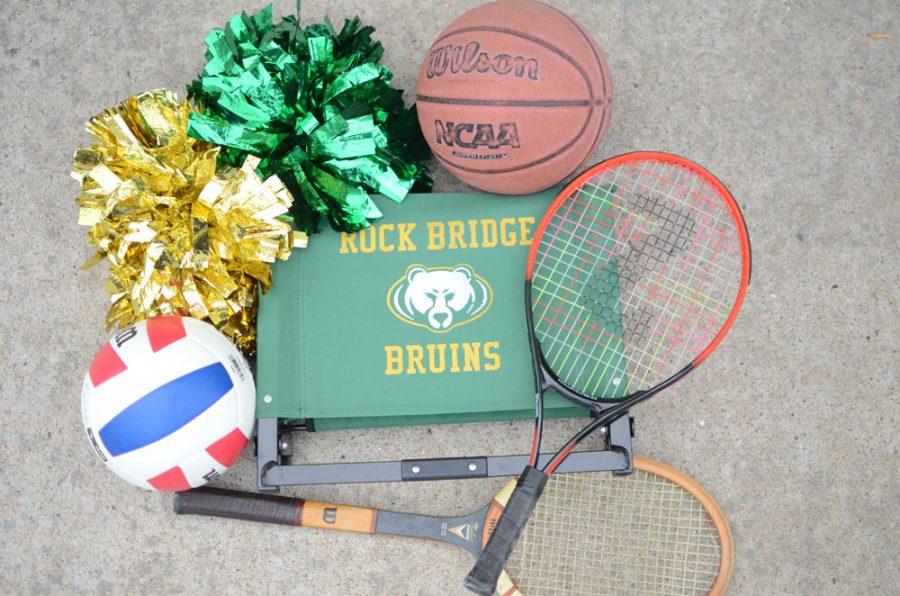When junior Max Simmons walked away from talking to his baseball coach, he was both disappointed and downcast. Simmons was told that he would not be returning to the varsity baseball team. While on varsity bench most of his sophomore year, Simmons created a strong bond with his teammates, which made leaving harder for him. Simmons says he understands the reason he was cut; the coach told him the reason was because of younger talent that was going to be better than him, and the coaches wanted them on the team.
“It was pretty sad at first, but my friends of the team made me feel all right again,” Simmons said. “They are some really good guys. [Being cut] taught me that high school is very temporary, and that I have a lot more to do in life than [RBHS] baseball.”
Simmons is not alone, as cuts in sports teams are common. When players try out, it doesn’t matter if an athlete was on the team before; No one is guaranteed a spot on a sports team. Tryouts can cause excitement for athletes wanting to play in the upcoming season, but there is also the reality of potentially getting cut from the team.
All athletes except for those in track and field, swimming, cross country and football are open to being cut from a team. Scott Wittenborn, head coach of the boys’ soccer team, says that the worst part of being a coach is cutting players. Wittenborn says during tryouts, the coaches do their best to assess player ability, effort and attitude.
“We try to assess their touch on the ball, skill with the ball at their feet, defensive abilities and ability to pass and shoot,” Wittenborn said. “We also try, though [it] is harder to do in a short amount of time, to assess their game knowledge and ability to play as part of a team.”
In past seasons, when Wittenborn and the assistant coaches were judging athletes during tryouts, they use a scoresheet that allows them to assess players. Wittenborn uses the scoresheet whenever he is less familiar with the players, because it is unneeded for varsity since he has already knows most of the players. Some things the coaches score athletes on are, speed, conditioning, first touch, shot, defending and field awareness.
Wittenborn says about five to 10 soccer players were cut this past fall. Although unsure of the number of girls who tried out for volleyball, Lacey Hahn, assistant coach for the volleyball team, points out that the majority of players who face elimination are freshmen, in part because so many initially decide to try out.
Hahn explains that the process of picking the team is difficult because it lets kids down and part of being a coach means helping kids. Like Wittenborn, Hahn uses a scoresheet to store information on player’s volleyball skills, such as rating the difficulty of their serves and passing errors.
Because of the emotional letdown athletes will feel when they don’t make the team, Hahn says a lot goes into the process of choosing a team. Skill alone does not guarantee a spot onto the volleyball team.
“We also place value on being a well-rounded player that is flexible concerning position. But, there are other important factors,” Hahn said. “Attitude can be a distinguishing factor when deciding among players. Being coachable, positive and hard-working will get you far.”
Wittenborn also believes in making a team filled with positive mentalities. Although Wittenborn has never dismissed a player from his team because of their attitude, he has placed an athlete on a lower team. He believes that there is no formal way to assess this and instead he has a discussion with the other coaches when looking who to place on the team.
“With attitude, I’m looking for several things,” Wittenborn said. “[I’m looking to see if] players are yelling at others when they make mistakes, do they put their head down and give up when they lose the ball or do they hustle to get the ball back, do they stop playing when they are tired or dig deep keeping working, do they act ‘too cool’ to try?”
Hahn said choosing which athletes to keep includes looking at chemistry between teammates and how they work together on and off the court. Hahn wants players that will encourage each other and not blame others for their mistakes. Another important factor in deciding who is on the team is their potential for growth. She said players often plateau and show no growth through work and coachability.
“I think that has a lot to do with attitude,” Hahn said. “If you tell a player to try a skill in a different way than they are currently doing it, and they don’t attempt it, then it shows they might not be coachable, and therefore don’t have as much potential for growth as a player who isn’t afraid to try a new way of doing things, even if that means they might fail at first.”
What was your tryout experience like? Tell us in the comments below.
LATEST NEWS
- Stress, anxiety skyrocket as students prepare for upcoming AP tests
- RBHS holds successful night of percussion
- Not even water?
- Solar eclipse to pass through Missouri, April 8
- How CPS is organized: a guide
- City of Columbia to hold school board election April 2
- Youth Election Participants to assist in upcoming municipal election
- City of Columbia hosts first Community Engagement Session for McKinney Building, hopes to gain public insight on the structure’s future
- RBHS Track Team Opener at Battle Gallery
- March Mathness Photo Gallery




















































































